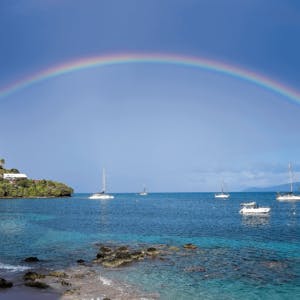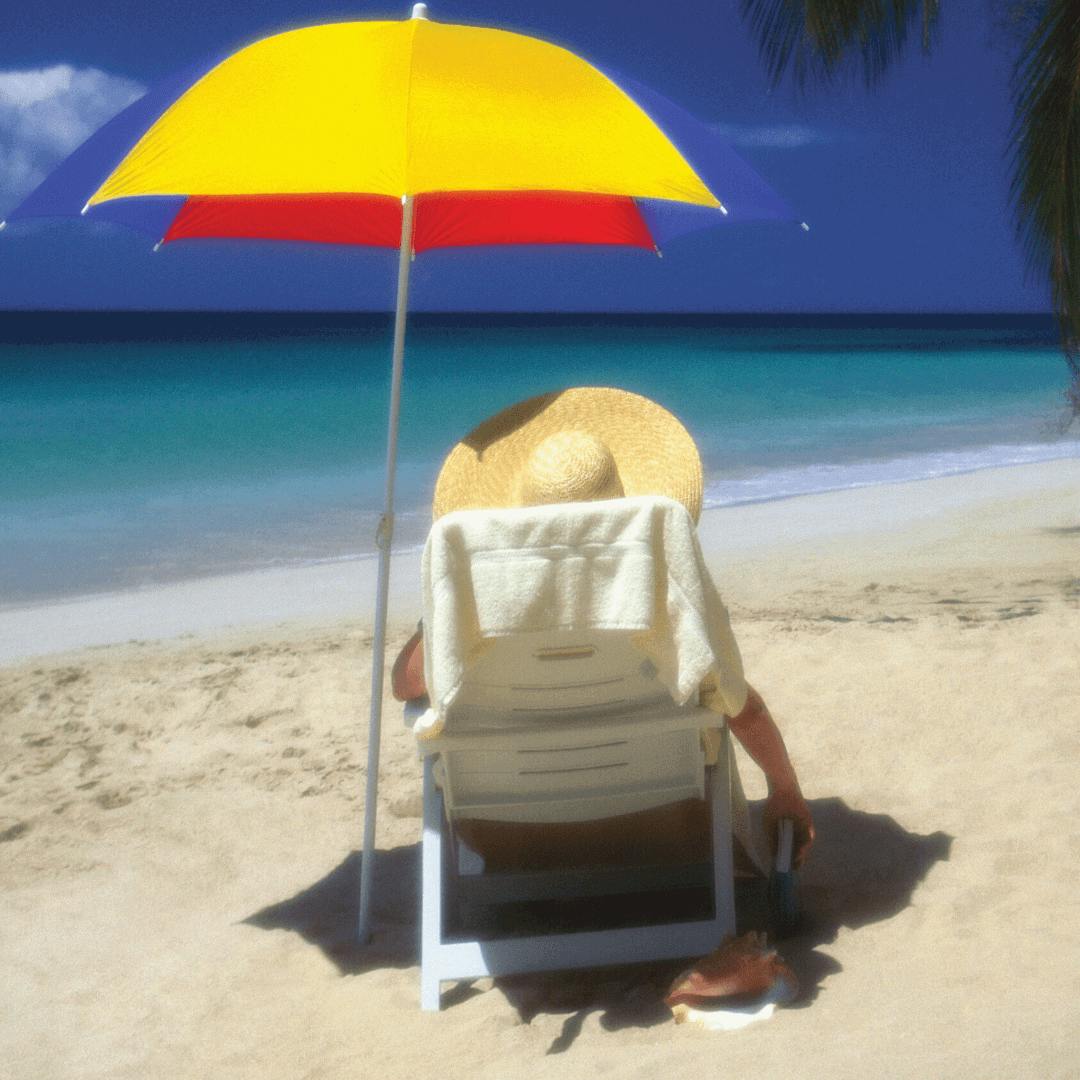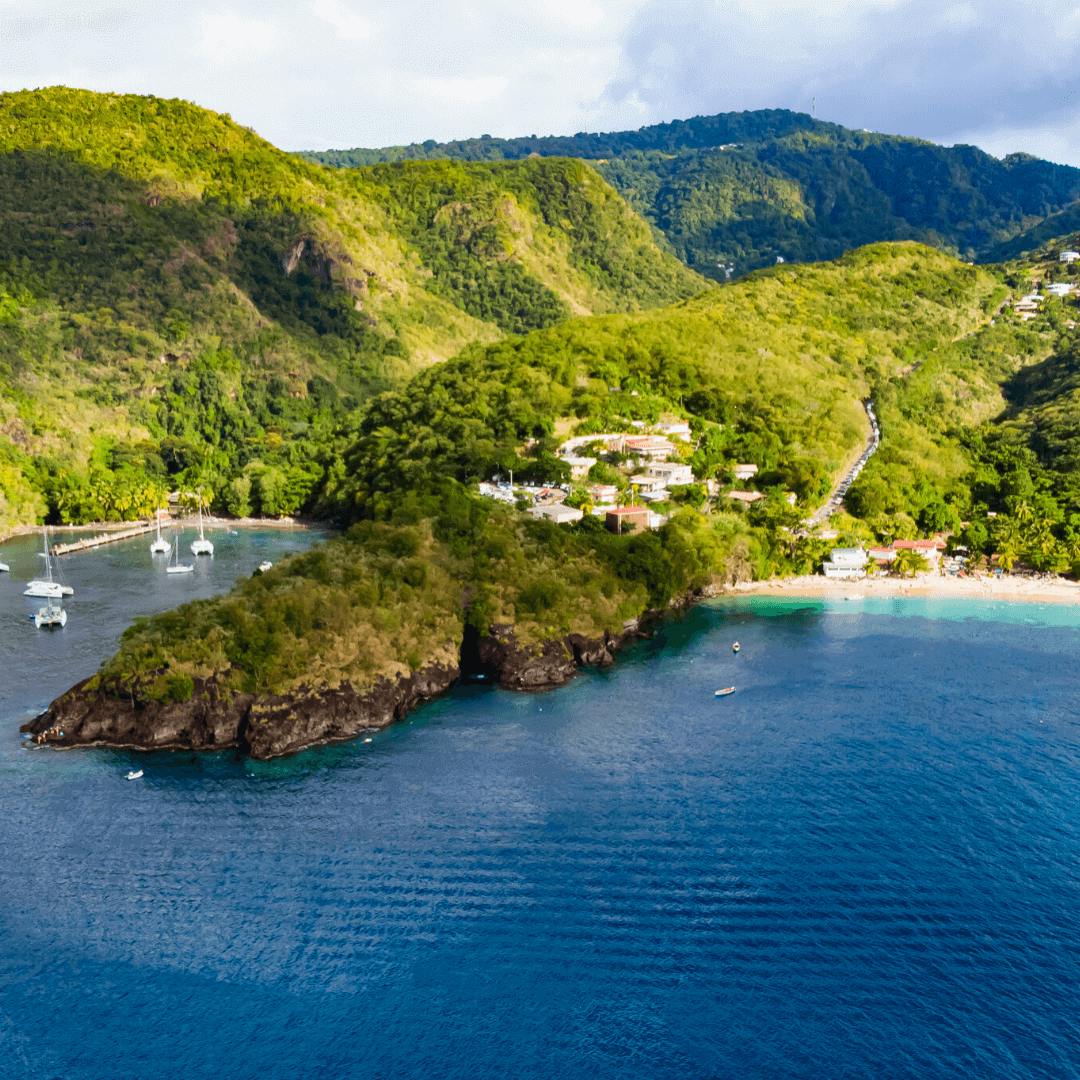Numerous scattered ruins and other historical sites show the riches of history, rum and the slavery legacy of Martinique's sugarcane plantations. Also known as the World's Rum Capital, it is commonly considered the Caribbean's finest gourmet island. The signature brand of food products fuels culinary passions.
Martinique offers its own magical sentiment, along with a sensuality that fosters romance. It is known as the Revenants' Island, pertaining to past spirits that return to the present day.
Martinique is undoubtedly one of the west hemisphere's most enchanting destinations. Francophiles love this island for its wine, rum, music, and élan. It encompasses plenty of natural scenery including white sandy beaches and rain forests. The Mont Pelée volcano overlooks the harbor town of Saint-Pierre, known as the Caribbean Pompeii.
Fort-de-France, its largest city, boasts plenty of beauty, as well as some delightful restaurants and clubs. Martinicans are very proud to live here, and you will be welcomed with pleasant smiles and polite hospitality.

Martinique Weather: Climate
The most common myth of Martinique weather is that it must be much hotter in summer than it is during the rest of the year.
The average monthly temperatures, in fact, remain relatively constant, changing by just about 3oC (5o F) throughout the year.
This balance is due to the trade winds (alizés), which regularly bring cooling breezes from the northeast. Summer is actually a great time to visit the islands, because lodging rates are much lower and there is no overcrowding on beaches, roads and restaurants. Winter, Christmas and NYE holidays are of course traditionally the most popular time to go. Most holiday bookings are made months in advance.
In Martinique average temperatures hardly vary at all. Temperatures stay hot all year long despite humidity, with a small chance of rain for much of the year. Compared with tourism destinations worldwide, the island is much less temperate than others — in the 5th percentile for warm weather. If you're planning to visit Martinique for the very warmest season, the hottest months are June, July, and August. And below the monthly average temperatures. The warmest time of year is usually mid-August, where highs are typically about 89.1 ° F (31.7 ° C) at night, with temperatures dipping only below 78.1 ° F (25.6 ° C).

Hurricanes
Hurricanes can occur in Martinique at any time from June to November, and traditionally the most probable period is during September. Nevertheless, climate change will perhaps alter entrenched trends. Every year, new technology forments more advanced storm warning systems to protect citizens and visitors on the island.
It is rare for any single island to be seriously damaged more than once or twice in 10 years and the real chances of experiencing a hurricane are very small. Some travelers buy trip cancellation insurance before travel, especially during the hurricane season's most active time period.
Precipitation (Rain or Snow)
If dry weather is what you are after, the months in Martinique with the lowest chance of significant precipitation are March, May and then February.
The lowest rain or snow risk occurs from early to mid-March. For example, there are no days of precipitation on average on the week of March 12th. By comparison, the week of July 16th is most likely to experience rain or snow in mid-July with an average of 2 days of heavy precipitation.
Can you find snow in Martinique Weather? Nope! Climate stations report no annual snow ever which is what we would expect.
Humidity and Wind
Martinique has very few humid months, and higher than average year-round humidity. March is the least humid month (66.9% relative humidity), and November (73.3%) is the most humid month.
Wind is generally moderate in Martinique. January is the windiest month, followed by February and June. January's typical wind speed is around 12.2 knots (14.1 MPH or 22.7 KPH) and is considered to be a "modest breeze." Maximum sustained winds (the highest day speed of more than a few moments) are at their highest in early to mid-January where the average high sustained velocities reach 18.2 knots, which is considered a fresh wind.
Martinique Travel Experience by Season
December-April
The Carnival season in Martinique and the usually cold winters in the United States combine forces to boost the island's tourist crowds and thus propel travel costs upwards. In the low 80s, the lavish hotels demand similarly extravagant prices amid fluttering temperatures. If you would like to attend a Carnival in Martinique, start searching for a hotel up to three or four months in advance.
Key Events:
Martinique's Carnival (Lent to Easter)

May
In late spring, the island is fairly calm and more hotels are open for business than in the stormy summertime. Temperatures rise into the mid-80s, and hotels in Martinique are always available at reduced rates (in contrast with the season from December to April). Start looking for a holiday package in winter for the best deals.
June-November
On the island, summer and fall mark the final rainy season when many hotels chose to shut down. During these seasons hotels that stay open do not lower their room prices as much as you would expect. The Atlantic hurricane season ceases by the end of November, meaning that the island continues to re-emerge from late autumn hibernation to prepare for peak season.
Key Events:
- Cultural Festival of Fort-de-France (July)
- International Bicycle Race (July)
- Yole Boat Race (July)
Best Time to Visit Martinique in accordance to the weather
May is the perfect time for tourism regarding the Martinique weather. Temperatures are steady in the 80Fs throughout the year but there is a risk of hurricanes in summer and fall. Planning a late spring trip will make sure you squeeze your sitting in before the worst storms hit, as well as avoiding crowds and high prices from the island's peak season from December to April.

